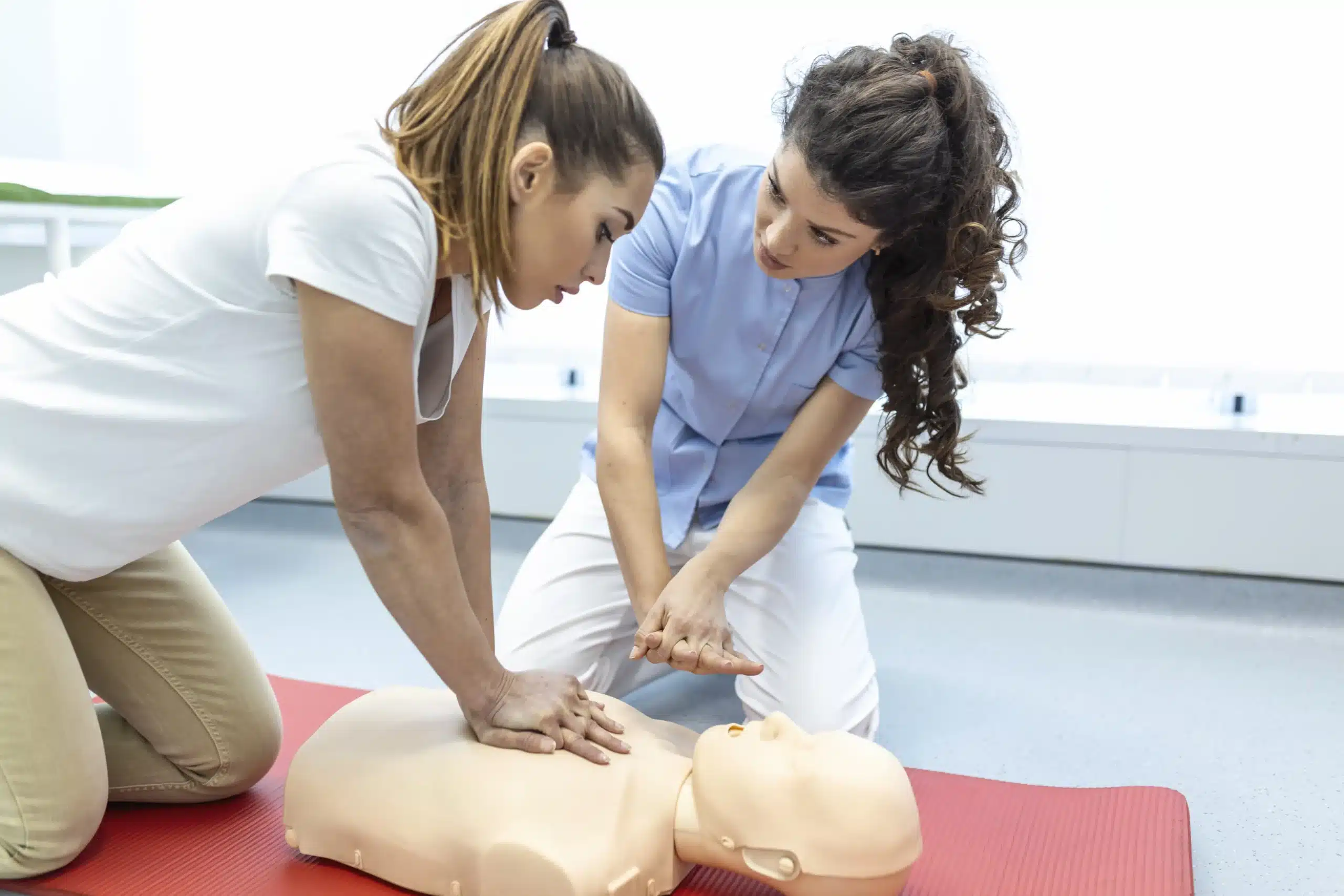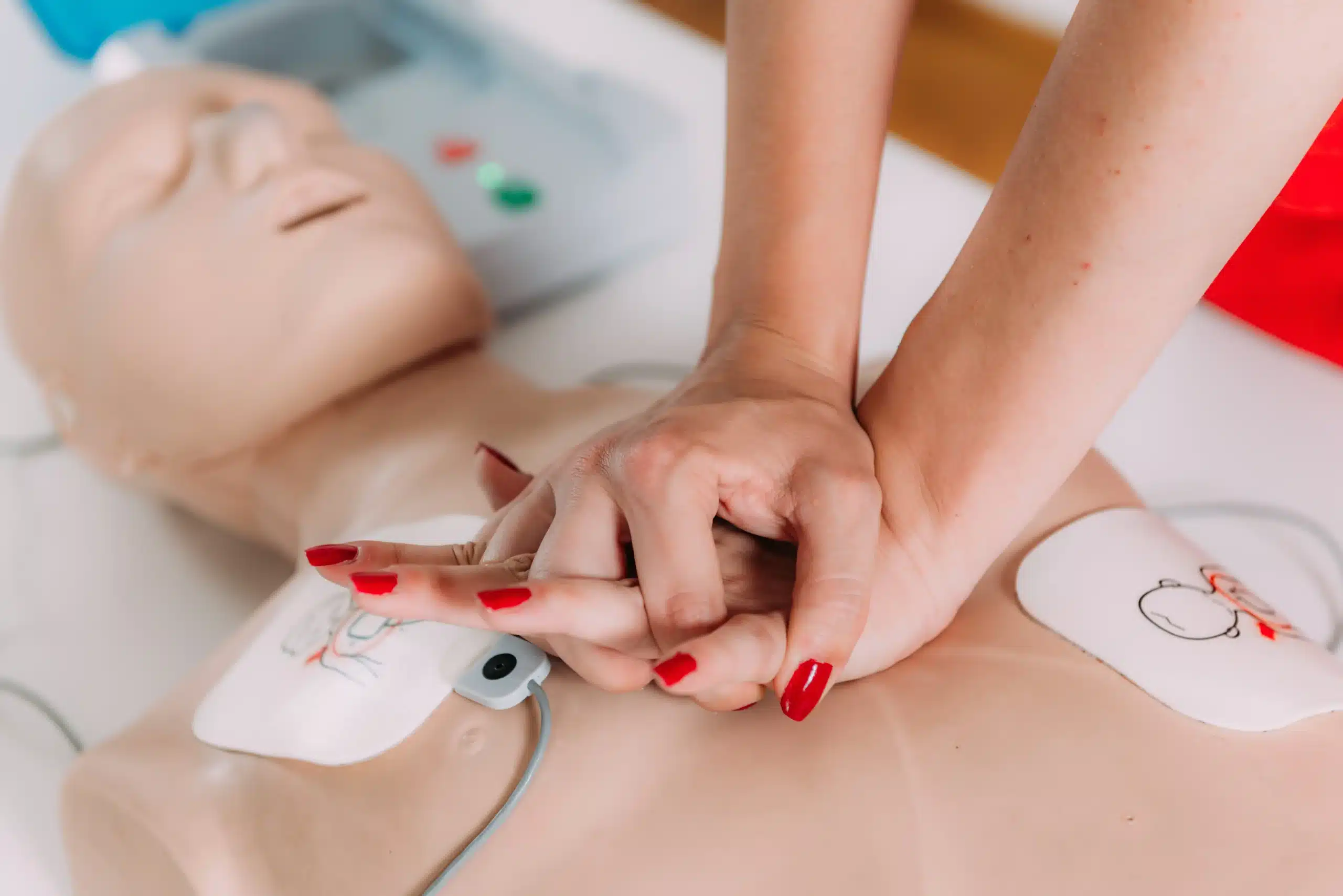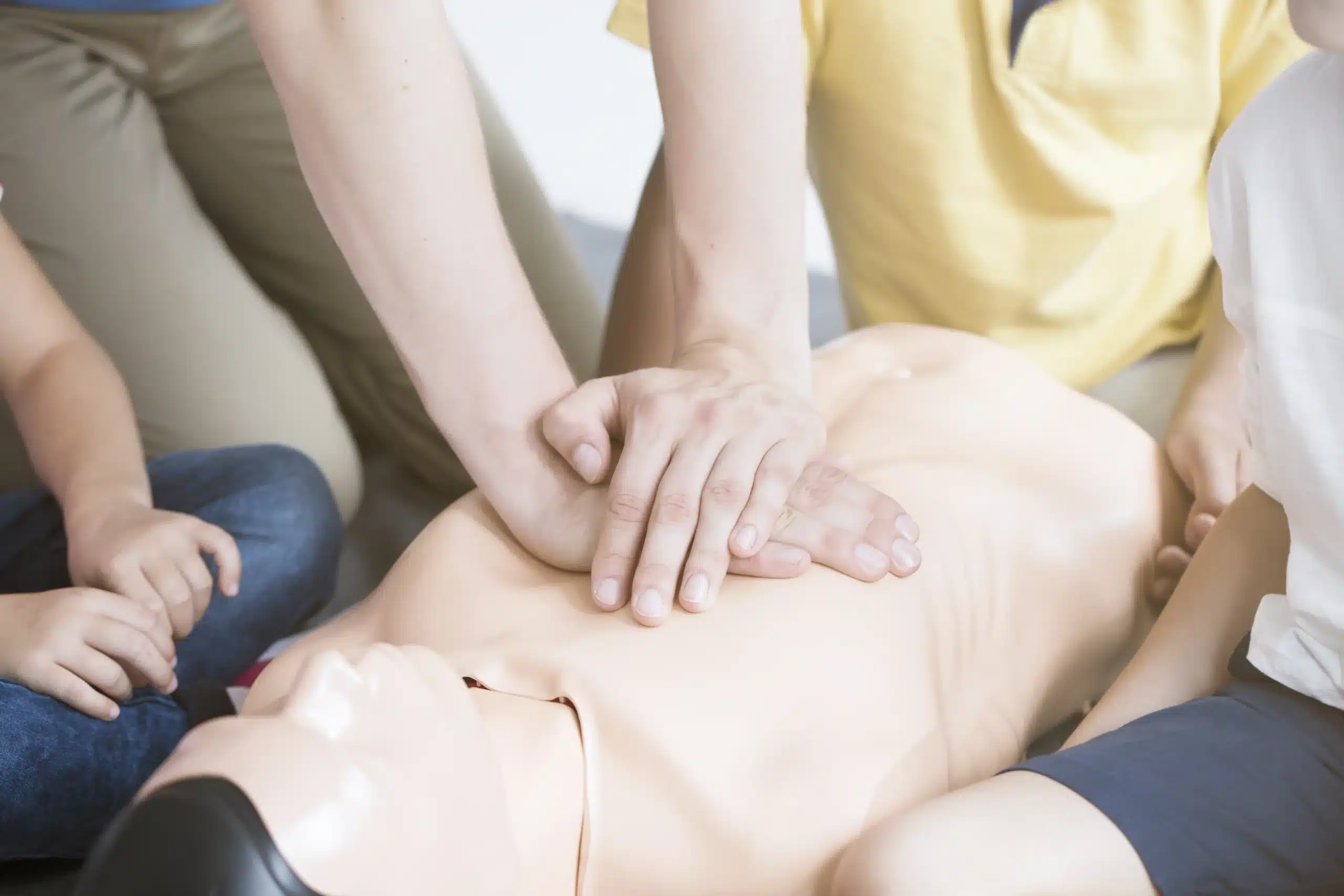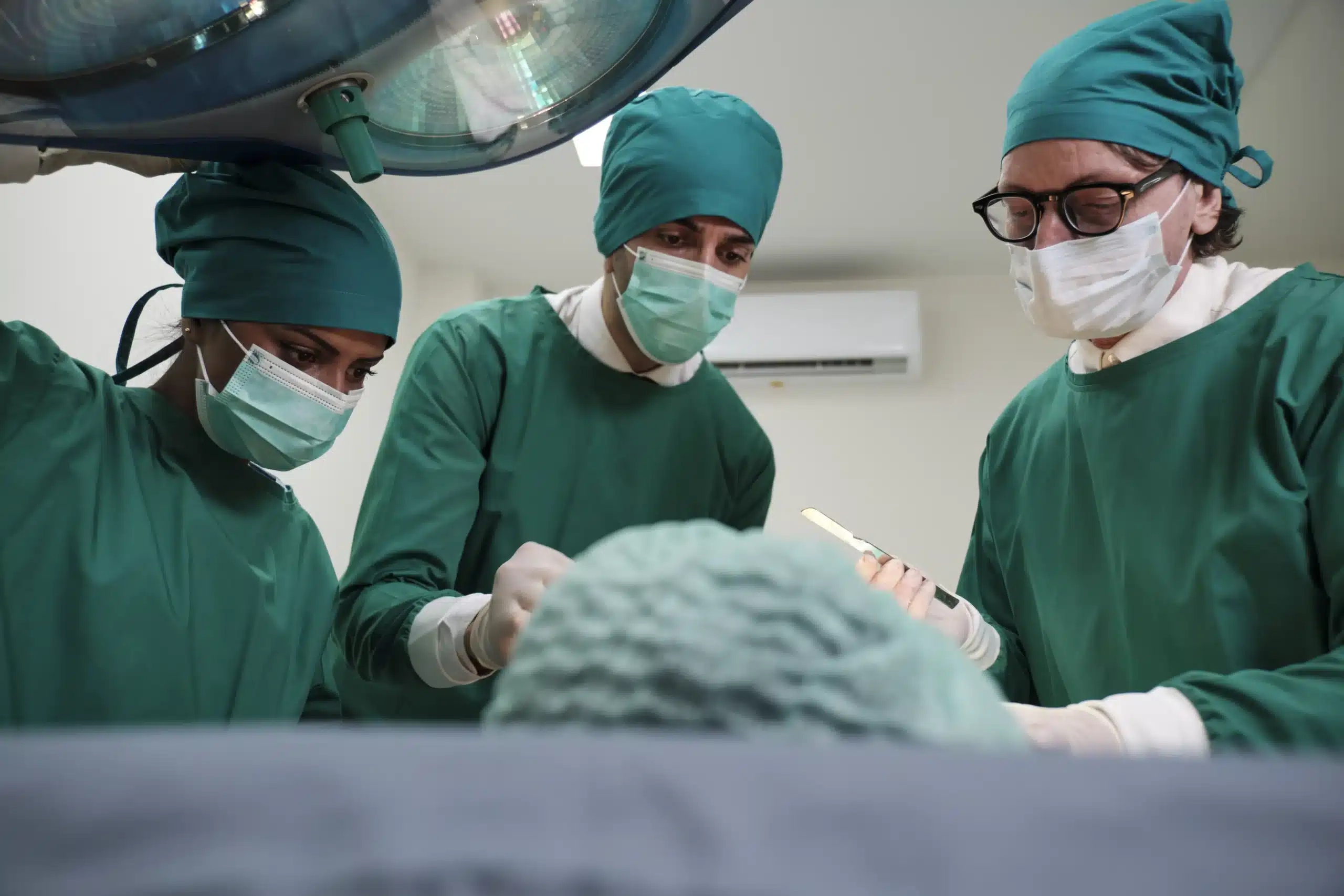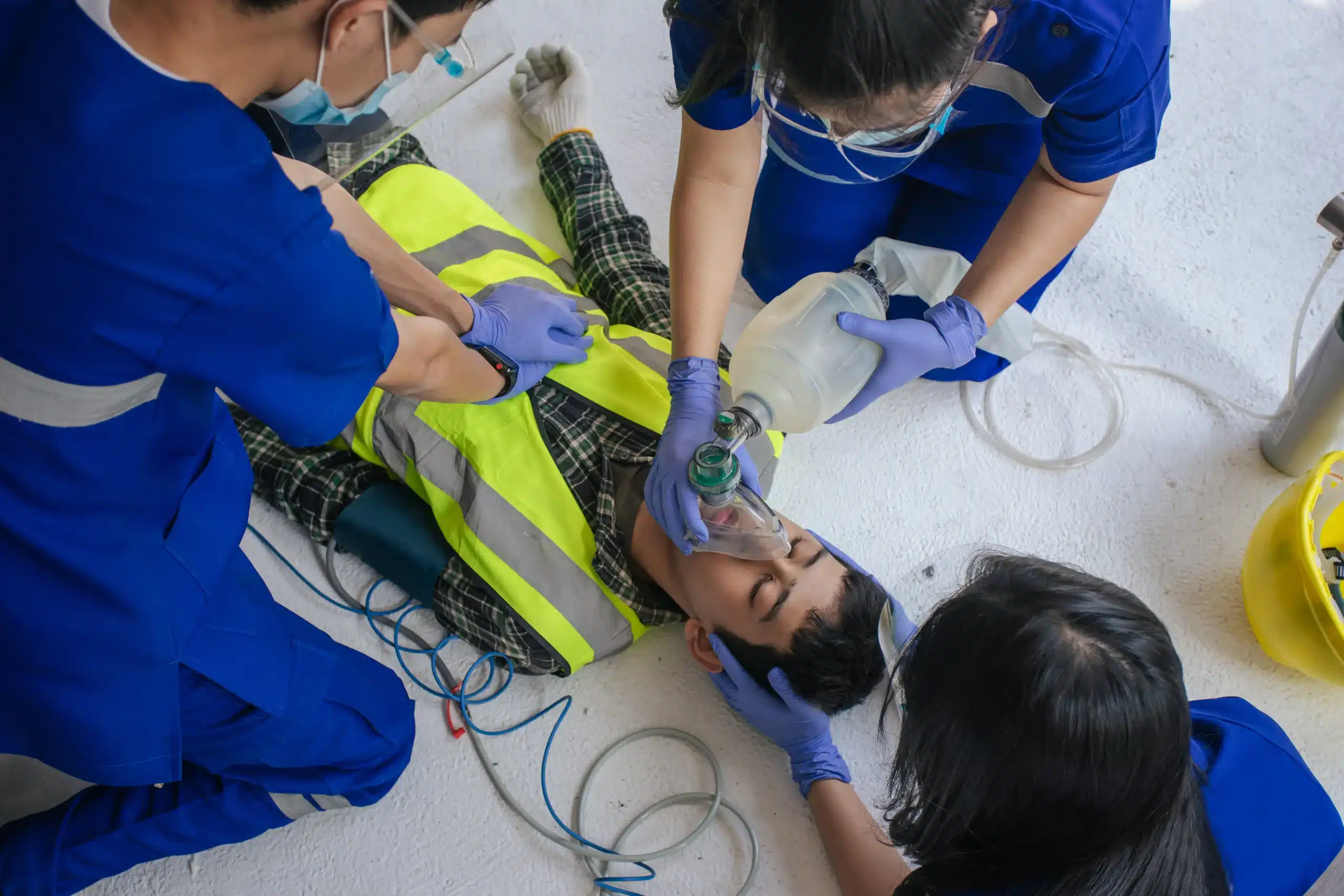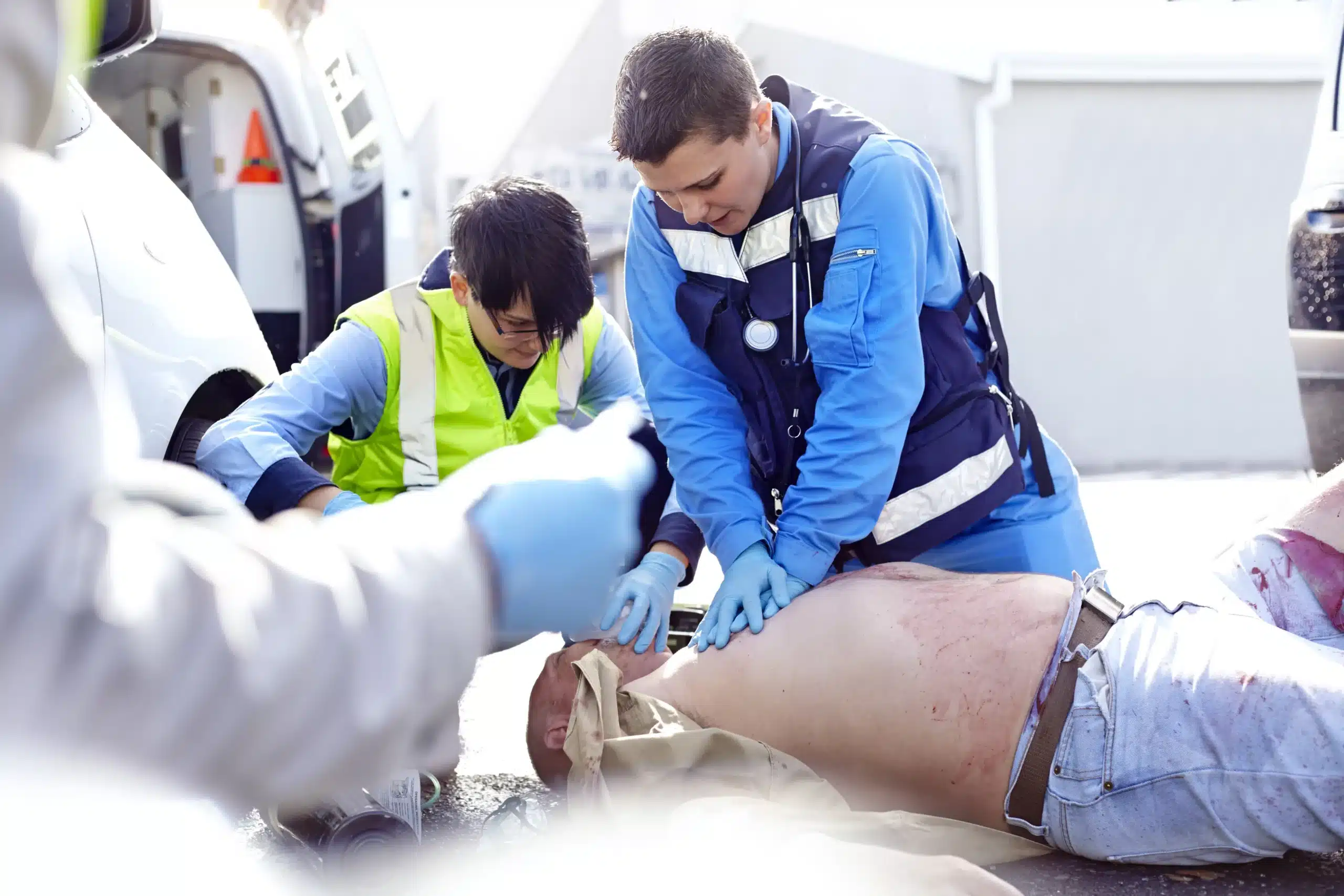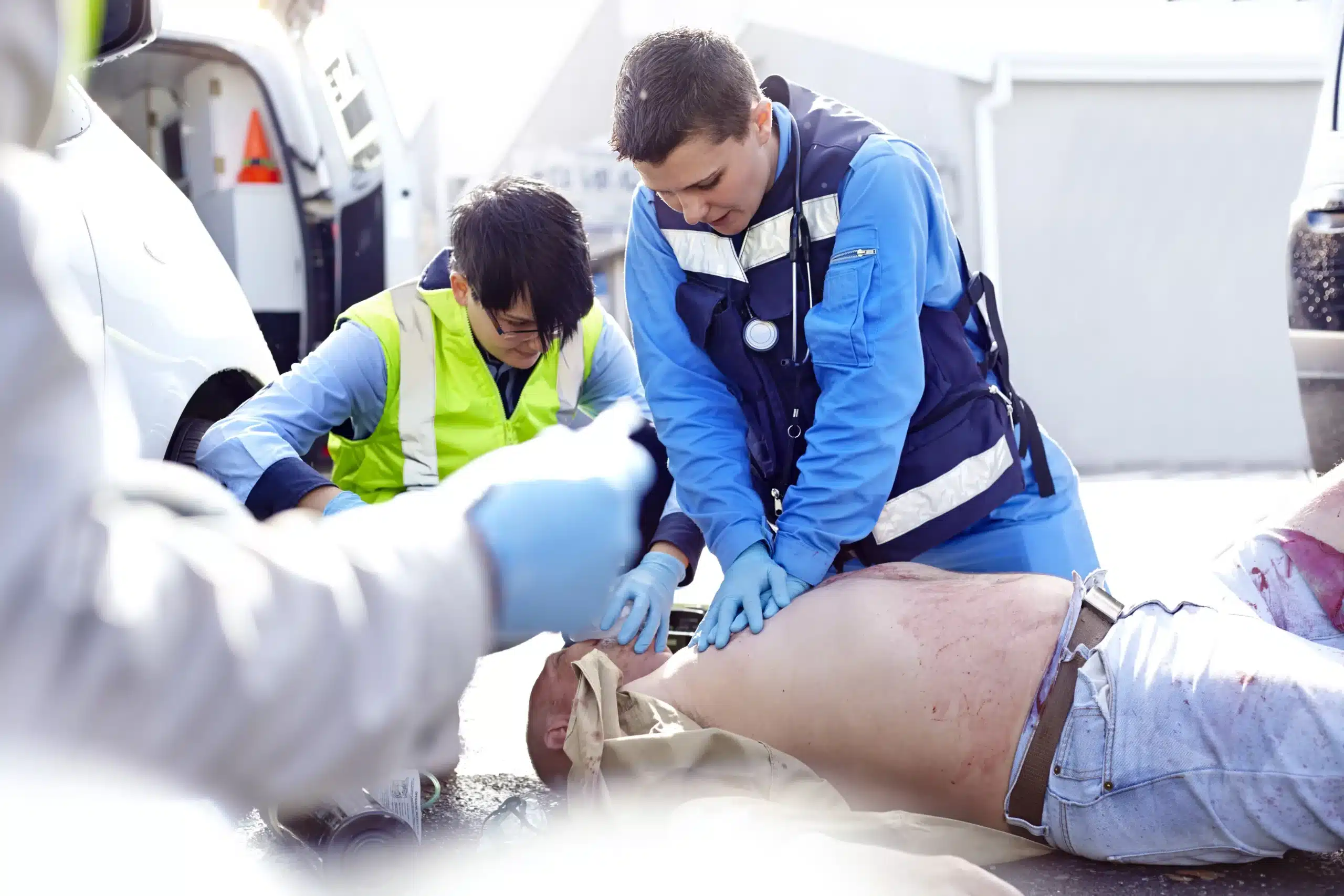In an emergency, seconds can matter. CPR training in San Leandro empowers individuals with the skills and confidence to respond effectively in critical situations. This guide explores the various CPR training options available in San Leandro, catering to different professions and individual needs. We’ll cover everything from basic CPR and first aid to advanced certifications like ACLS and PALS. Whether you’re a healthcare provider, an educator, or a concerned parent, understanding the importance and availability of CPR training in San Leandro can make a significant difference in your community.
Key Takeaways
- Find the right CPR training for your needs: Whether you’re a healthcare professional, childcare provider, or community member, various CPR certifications, from basic to advanced, empower you to handle emergencies.
- Select a CPR training provider carefully: Look for AHA-accredited providers with experienced instructors, comprehensive course content, and flexible scheduling options like blended learning or on-site group training.
- Stay current with your CPR skills: Regular practice and refresher courses are essential for maintaining proficiency. Utilize online resources and consider hands-on practice to keep your skills sharp and your certification current.
What is CPR Training in San Leandro?
CPR training in San Leandro gives people the skills to handle cardiac and breathing emergencies. These courses cover essential techniques like chest compressions, rescue breaths, and recognizing the signs of a heart attack or stroke. It’s about empowering individuals to respond effectively and potentially save lives. The training caters to various people, from healthcare professionals to community members like teachers, parents, and childcare providers. This helps create a network of prepared individuals ready to assist during emergencies.
San Leandro CPR training offers different certification levels, including Basic Life Support (BLS) for healthcare providers and other professionals, and CPR/First Aid certification for anyone wanting to learn these skills. Many programs adhere to American Heart Association (AHA) guidelines, ensuring high-quality training. You can find classes on various topics, from basic CPR and first aid to advanced certifications like Advanced Cardiovascular Life Support (ACLS) and Pediatric Advanced Life Support (PALS). Some providers also offer specialized programs like the Resuscitation Quality Improvement (RQI) program, which focuses on maintaining excellent CPR skills for healthcare professionals. For convenient and affordable options, explore CPR and first aid training in San Leandro. You can also find group discounts if you’re looking to train multiple people. Contact us today to learn more about our programs and how we can help you become CPR certified. Contact Us
CPR Course Types
Knowing which CPR course is right for you depends on your individual needs and career path. Here’s a breakdown of the common types of CPR training available in San Leandro:
Basic Life Support (BLS)
Basic Life Support (BLS) certification is essential for healthcare providers in virtually all medical fields. This course equips you with the skills to respond to cardiac arrest and other emergencies, providing crucial care until more advanced medical personnel arrive. Consider it the foundation for any healthcare professional. Hayward CPR Classes offers BLS certification among its range of courses. For those in San Leandro, CPR Education also provides BLS training as part of their CPR and first aid programs.
Advanced Cardiovascular Life Support (ACLS)
Advanced Cardiovascular Life Support (ACLS) training builds upon the foundation of BLS. It’s designed for healthcare providers who lead or participate in managing cardiopulmonary arrest and other serious cardiovascular emergencies. This course covers advanced techniques and strategies for treating these critical situations. Bay Area CPR offers ACLS training among its CPR course offerings in Hayward.
Pediatric Advanced Life Support (PALS)
Pediatric Advanced Life Support (PALS) focuses on the immediate treatment of critically ill infants and children. This specialized training emphasizes the rapid recognition and intervention necessary to stabilize young patients in emergencies. San Leandro CPR Classes offers PALS training, along with other essential certifications like BLS and ACLS. The American Heart Association RQI (Resuscitation Quality Improvement) program, a popular method for healthcare professionals to maintain their certifications, is often integrated into these courses. Hayward CPR Classes also offers RQI classes.
First Aid & CPR
Combining CPR and first aid training provides a well-rounded skill set for responding to various emergencies. This course covers essential life-saving techniques, from CPR for adults, children, and infants to managing injuries and other medical situations. CPR Education offers combined CPR and first aid training for both individuals and groups, making it a convenient option for comprehensive emergency preparedness.
Choosing a CPR Training Provider
Finding the right CPR training provider is crucial for a positive and effective learning experience. Here’s what to consider:
Accreditation and Certification
First, confirm the provider is accredited by a reputable organization like the American Heart Association (AHA). AHA certification ensures your training meets established standards and will be recognized by employers and other organizations. Hayward CPR Classes offers a variety of AHA-certified courses.
Instructor Qualifications
Look for instructors with significant experience in the medical field or emergency response. Experienced instructors offer valuable real-world insights, making the training more engaging and practical.
Course Content and Materials
A good CPR training program should offer various courses like BLS, ACLS, PALS, and First Aid, catering to different needs and skill levels. Hayward CPR Classes provides comprehensive training options, from basic CPR to advanced life support. Ensure the provider offers the specific training you require.
Student Reviews and Testimonials
Reading reviews from previous students gives you valuable insights into a training program’s quality. Check online platforms like Yelp or Google Reviews to understand other students’ experiences.
Flexible Scheduling
Finally, consider a provider that offers flexible scheduling. Look for classes offered at various times to accommodate your schedule. Contact Hayward CPR Classes to find a class that fits your availability. They offer daily classes to meet diverse scheduling needs.
CPR Training Costs & Reimbursement
Understanding CPR training costs in San Leandro helps you budget effectively and find the best value. This section breaks down average pricing, potential discounts, and reimbursement options.
Average Course Pricing
CPR training costs vary based on the course type and provider. Basic CPR and AED training in San Leandro averages around $35 per person for a two-hour course, according to sources like Thumbtack. For businesses, group training can make CPR certification more economical. Remember that prices can fluctuate, so it’s always best to check directly with your chosen provider for the most up-to-date pricing. Hayward CPR classes offers a low price guarantee for all CPR courses.
Group Discounts & Special Offers
Many CPR training providers offer discounts for group bookings. San Leandro CPR Classes, for example, specializes in affordable training and often features promotions for groups. This can significantly reduce the per-person cost, making group training an excellent option for businesses, community groups, or families training together. Hayward CPR Classes also provides various discounts for group classes.
Insurance & Employer Reimbursement
Some employers cover or reimburse the cost of CPR training for their employees. Providers like CPR Education often work directly with businesses and organizations, facilitating these reimbursement processes. Check with your company’s HR department to see if they offer this benefit. Even if your employer doesn’t directly cover the cost, some health insurance plans may offer partial reimbursement for preventative health measures like CPR training. Contact your insurance provider to inquire about potential coverage.
CPR Certification: How It Works
CPR certification gives you the skills to handle cardiac and breathing emergencies. This section explains how the process works, from prerequisites to renewal.
Course Prerequisites
Most CPR courses, including those at Hayward CPR Classes, don’t have formal prerequisites. This makes the training accessible to everyone from healthcare professionals to community members. However, some advanced courses, like ACLS (Advanced Cardiovascular Life Support) and PALS (Pediatric Advanced Life Support), might recommend prior CPR experience. Check with your chosen training provider to confirm any specific requirements.
Training Duration and Format
CPR training is designed to be efficient and convenient. Courses come in several formats, including in-person and blended learning options that combine online modules with hands-on skills sessions. Hayward CPR Classes offers various scheduling options, including daily classes and on-site group training, to fit busy schedules. Course duration depends on the certification. Basic CPR courses can often be completed in a day, while more advanced certifications might take longer.
Skills Assessment and Testing
CPR certification involves showing your skills through practical assessments and written exams. You’ll practice techniques like chest compressions, rescue breaths, and using an AED on mannequins. Instructors give feedback to ensure you meet AHA standards. The RQI program, offered by Hayward CPR Classes, uses a skills testing station for regular practice and evaluation.
Certification Validity & Renewal
CPR certifications are usually valid for two years. To maintain your credentials and stay current with guidelines, you’ll need to renew. Renewal often involves a program that combines online modules with in-person skills testing and same-day card issuance for BLS, ACLS, and PALS. This streamlined approach makes maintaining your certification straightforward. Contact Hayward CPR Classes for more information on renewing your certification.
San Leandro CPR Program Highlights
San Leandro CPR training programs offer several advantages for those seeking certification. With a focus on convenience, flexibility, and affordability, these programs cater to various needs and schedules.
Daily Classes
Balancing work, family, and other commitments can make finding time for training challenging. San Leandro CPR classes understand this and offer courses daily, ensuring you can find a time that works for you. This daily availability removes scheduling barriers that often prevent people from obtaining this life-saving certification. Check San Leandro CPR class schedules to find the perfect fit.
Blended Learning
For those looking for a streamlined renewal process, blended learning options combine online modules with in-person skills sessions. This approach allows you to complete the coursework at your own pace before demonstrating your skills in a practical setting. San Leandro CPR Classes offers this blended learning format, making renewals efficient and convenient. You can learn more about their blended learning CPR courses on their website.
On-Site Group Training
Whether you’re a business owner, a community organizer, or simply part of a group interested in CPR training, on-site group training offers a practical solution. CPR Education provides tailored on-site training for businesses, organizations, and even families, bringing the instruction directly to you. This eliminates the need for individual travel and allows for a cohesive learning experience. They offer a range of CPR and first-aid courses, including AHA courses, BLS CPR, pediatric CPR, and AED training.
RQI Program Implementation
The American Heart Association’s Resuscitation Quality Improvement (RQI) program represents a modern approach to CPR certification. This program emphasizes continuous quality improvement and offers a more efficient way for healthcare professionals to maintain their certifications. San Leandro CPR classes utilize the RQI program, providing a streamlined path to BLS, ACLS, and PALS certification. The program often includes online modules, skills testing, and same-day card issuance. Learn more about RQI classes.
Low-Price Guarantee
Cost can be a significant factor when considering CPR training. San Leandro CPR classes offer a low-price guarantee in Alameda County, ensuring you receive high-quality training without breaking the bank. This commitment to affordability makes CPR certification accessible to a wider community. For those interested in training larger groups, explore options for group CPR discounts. For questions about pricing or scheduling, contact Hayward CPR Classes.
CPR Training Benefits by Profession
CPR training offers distinct advantages across various professions. Knowing how to perform CPR can be the difference between life and death, and for certain professions, it’s a critical skill set. Let’s explore how
Healthcare Professionals
For healthcare professionals like doctors and nurses, CPR certification is often a job requirement. BLS training equips these individuals with the skills to respond to cardiac arrest and other emergencies, ensuring patient safety and potentially improving outcomes. It’s a cornerstone of quality patient care and a fundamental skill for anyone working in a medical setting. CPR training for healthcare providers emphasizes advanced techniques and protocols specific to their professional needs. Knowing they can handle these situations confidently allows medical professionals to focus on providing the best possible care.
Childcare Providers
When working with infants and children, emergencies can arise unexpectedly. For childcare providers, having CPR and first-aid certification is paramount. This training empowers them to respond effectively to choking incidents, breathing difficulties, and other medical emergencies that might occur in a childcare setting. It provides the confidence and skills necessary to act quickly and appropriately in a crisis, potentially saving a child’s life. Parents and guardians gain peace of mind knowing their children are cared for by trained professionals prepared to handle emergencies.
Educators and Coaches
Educators and coaches are responsible for the well-being of students and athletes under their supervision. CPR training prepares them to handle medical emergencies that might occur during school hours, sporting events, or other activities. Knowing how to perform CPR allows them to provide immediate assistance, increasing the chances of a positive outcome while waiting for professional medical help. This preparedness creates a safer environment for everyone involved.
Workplace Safety Personnel
Maintaining a safe work environment is a top priority for any organization. CPR certification is a valuable asset for workplace safety personnel, equipping them to respond effectively to medical emergencies on the job. Whether it’s a sudden cardiac arrest or a breathing emergency, having trained personnel on-site can significantly impact the outcome, providing immediate care until emergency medical services arrive. This training is essential for creating a safer and more prepared workplace, fostering a culture of safety and preparedness.
Get Ready for CPR Training
Getting ready for your CPR training doesn’t require a ton of prep, but a little planning goes a long way. Here’s what you should know before you head to class:
What to Bring
Keep it simple. Bring a valid photo ID and any relevant medical information that might be helpful during the training. If you have specific learning needs or physical limitations, letting your instructor know beforehand can help them tailor the experience for you. Contacting Hayward CPR Classes ahead of time is a great way to ensure a smooth and comfortable learning environment.
Dress Code
Comfort is key! Wear clothing that allows you to move freely. CPR training involves physical activity, including bending, kneeling, and performing chest compressions. Think athletic wear or comfortable everyday clothes. Avoid anything too restrictive or that you’ll be worried about getting dirty.
Pre-Course Study Materials
While not always mandatory, reviewing any pre-course materials provided can give you a head start. Many CPR training providers offer resources that cover essential concepts and techniques. Familiarizing yourself with the basics before class allows you to focus on hands-on practice and ask more specific questions during the training. This can significantly improve your learning and retention. Check if your chosen provider, such as Hayward CPR Classes, offers online modules or study guides.
Keep Your CPR Skills Sharp
CPR is a lifesaving skill, but like any skill, it fades without practice. Staying up-to-date on the latest guidelines and techniques is critical for providing effective care during an emergency. Here’s how to keep your CPR skills sharp:
Refresher Courses
The best way to maintain your CPR certification and keep your skills current is by enrolling in refresher courses. Look for programs like the RQI program offered by Hayward CPR Classes. These courses often use a blended learning approach, combining online modules with in-person skills testing and same-day card issuance for certifications like BLS, ACLS, and PALS. This flexible format makes it easier to fit refresher training into your busy schedule.
Online Resources
Beyond formal refresher courses, numerous online resources can help you stay informed about the latest CPR techniques and guidelines. The American Heart Association website offers valuable information and updates. Regularly reviewing these resources can supplement your in-person training and reinforce your knowledge.
Hands-On Practice
While online resources and refresher courses are valuable, nothing replaces hands-on practice. Regularly practicing the physical techniques of CPR, including chest compressions and rescue breaths, helps build muscle memory and confidence. Consider investing in a personal CPR manikin to practice at home or organizing practice sessions with colleagues or friends. Hayward CPR Classes offers various courses, including BLS, ACLS, PALS, and First Aid, providing opportunities for hands-on training and skill development. Consistent practice is key to maintaining proficiency and responding effectively in a real-life emergency.
CPR Training Providers in San Leandro
Finding the right CPR training provider is crucial for a positive learning experience. Here are a few options to consider in and around San Leandro:
Hayward CPR Classes
Hayward CPR Classes offers AHA courses including BLS, ACLS, PALS, and CPR training in nearby Hayward. This makes them a convenient option for those seeking a CPR class near San Leandro. They also offer group discounts, a great option for workplaces or community groups.
CPR Education
CPR Education focuses on providing CPR and first aid training in San Leandro and surrounding areas. They offer various courses, including AHA certifications, BLS CPR, and pediatric CPR. They work with both individuals and groups, making them a versatile choice.
Bay Area CPR
Bay Area CPR, a woman-owned AHA Training Center, offers a range of courses, including BLS, ACLS, PALS, CPR, and first aid. They provide classes seven days a week in San Leandro and nearby cities, offering schedule flexibility. Their commitment to high-quality instruction makes them a reputable choice.
San Leandro CPR Classes
San Leandro CPR Classes provides a comprehensive selection of AHA certification courses. They offer a convenient daily schedule for BLS, ACLS, PALS, CPR, and first-aid certification in San Leandro and surrounding areas. This localized approach makes them an easily accessible option for residents.
Related Articles
- Why CPR is Crucial in Healthcare
- Pediatric CPR & First-Aid Training in Hayward – Hayward CPR Classes
- Importance of Workplace CPR and First-Aid Training
- CPR Classes in San Leandro: Your Certification Guide – Hayward CPR Classes
- CPR Training in Hayward: Your Guide – Hayward CPR Classes
Frequently Asked Questions
What’s the difference between BLS and CPR?
CPR (Cardiopulmonary Resuscitation) focuses on chest compressions and rescue breaths, the core techniques for reviving someone in cardiac arrest. BLS (Basic Life Support) builds upon CPR, adding essential skills like using an AED (Automated External Defibrillator) and managing obstructed airways. Think of CPR as a core component within the broader scope of BLS. BLS certification is typically required for healthcare providers and professionals in specific fields.
How do I choose the right CPR class for me in San Leandro?
Consider your current job or career aspirations. If you’re in healthcare, BLS is likely necessary. If you’re a parent, teacher, or simply want to be prepared for emergencies, a CPR/First Aid course might be perfect. Check out local providers like Hayward CPR Classes or CPR Education; they offer various courses to fit different needs. Also, think about your schedule and whether you prefer in-person or blended learning options.
How much does CPR training cost, and are there any discounts?
CPR training costs vary depending on the provider and the type of course. Basic CPR classes can start around $35, while more advanced certifications like ACLS and PALS are more expensive. Many providers offer group discounts, so if you’re training with friends, family, or colleagues, be sure to ask. Some employers also reimburse CPR training costs, so check with your HR department.
How long is CPR certification valid, and how do I renew it?
CPR certifications are typically valid for two years. To renew, you’ll need to take a refresher course. Many providers offer streamlined renewal courses that combine online learning with in-person skills testing. This makes it easier to fit renewal into your busy schedule. Check with your certifying organization or training provider for specific renewal requirements.
What if I have physical limitations? Can I still take CPR training?
Absolutely! CPR training is adaptable. If you have any physical limitations or concerns, inform your instructor before class. They can modify certain techniques or offer alternative approaches to ensure you can participate fully and learn the essential skills. Most instructors are happy to accommodate individual needs to make the training accessible to everyone.
